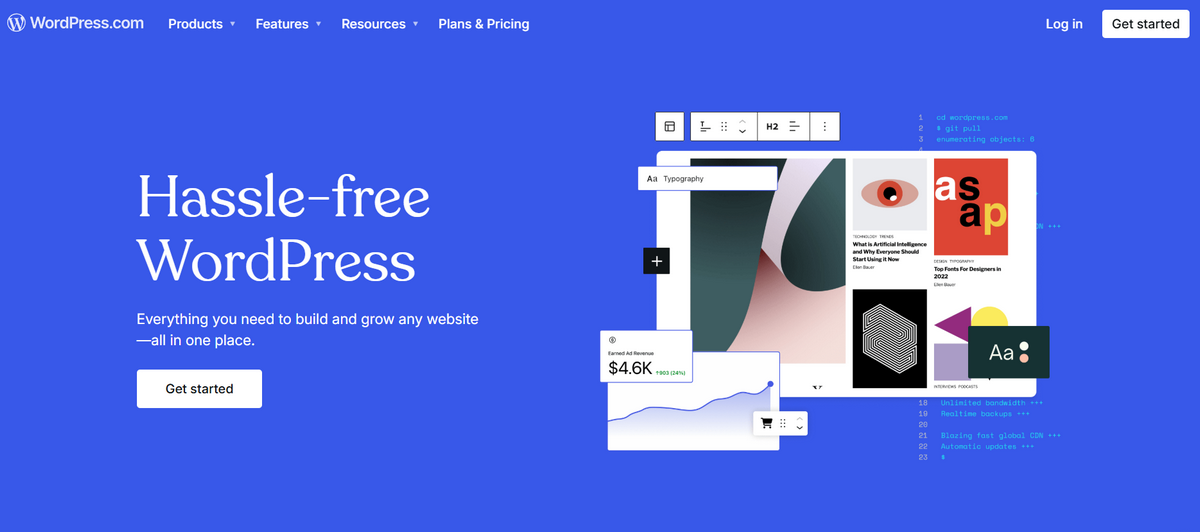Despite all the hustle around the growing potential of digital presence, manufacturing website designs continue to lag behind others. Standing somewhat apart, they do not dazzle you with mind-blowing WebGL animations or interactive experiences, preferring to stay true to traditional and old-school self-presentation methods.
However, the situation changes as web platforms continue to be among the best tools for conducting marketing, advertising, and branding campaigns, providing much-needed engagement, credibility, and revenue for manufacturers in the cutthroat landscape and during economic fluctuations.
Today, we might witness more industry-specific website designs in the manufacturing field that follow trends and adopt modern techniques to keep up with the mainstream and stay competitive. Here are 15 real-world manufacturing website designs that will surprise you with their refreshing look and high-end solutions. Check them out for fabulous inspiration and insights, and get acquainted with the seven essential steps every professional web design company takes to create one.
John Deere – Precision Meets Usability
Occupying the leading position in the agricultural and forestry machinery sector, this industry goliath is anything but sweet regarding harvesting and plowing. However, its official website will delight you with a gentle approach. It has an eye-pleasing look, a user-friendly interface, and a comfortable user experience.
The website reflects the strong personality of a manufacturing and industrial leader and meets all the essentials of modern web projects. It features an impressive hero image, a fully responsive layout, high-quality imagery, and a properly balanced landing page. Even though the company has a diverse product range, its website easily accommodates products through an intuitive catalog structure, ensuring users find everything they need with several clicks.
Iconic green and yellow colors mark the interface's branding, whereas the section allocated to the company's contribution to the U.S. manufacturing sector instills trust and credibility.
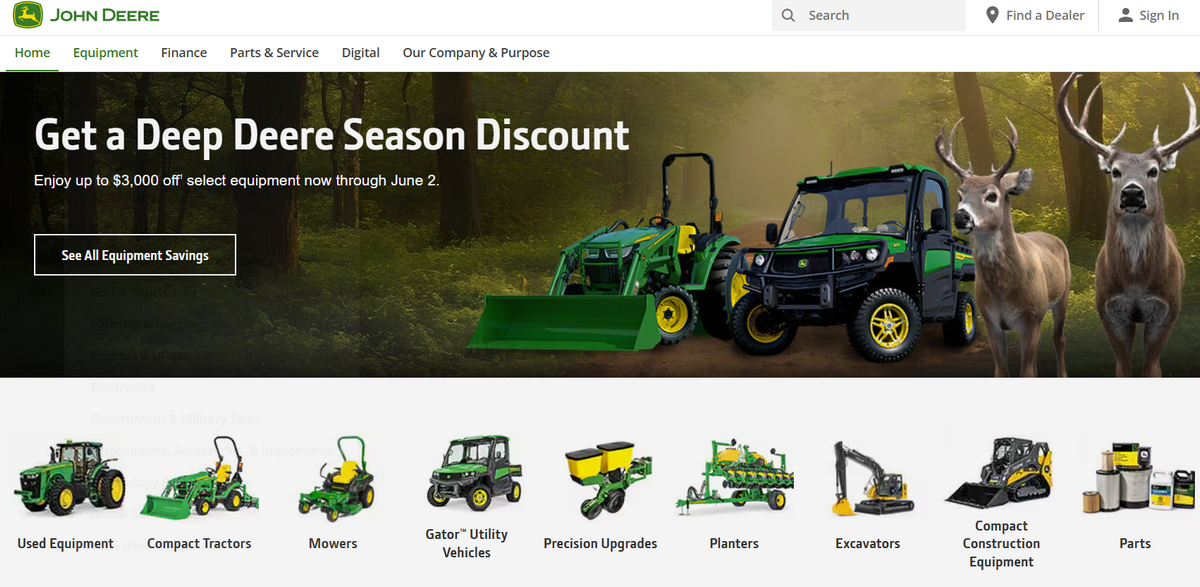
Caterpillar – Industrial Power with a Digital Edge
Caterpillar is also famous for its invincible heavy equipment and machinery, indispensable in construction and mining. Despite operating in a truly tough and complex tech sector, the branding team behind Caterpillar made the company relatable to a broad digital audience by giving its official website a brand personality with an Outlaw archetype.
They have introduced several modern approaches, such as video intros, bold typography, a mosaic layout, and authentic imagery, to make the user interface look modern and rebellious. Meanwhile, well-elaborated market-specific filtering provides excellent searchability and accessibility for comfortable product discovery.
Prioritizing B2B usability, brand vision, and mission, they have instilled a unique character into a website design to resonate with the diverse market.
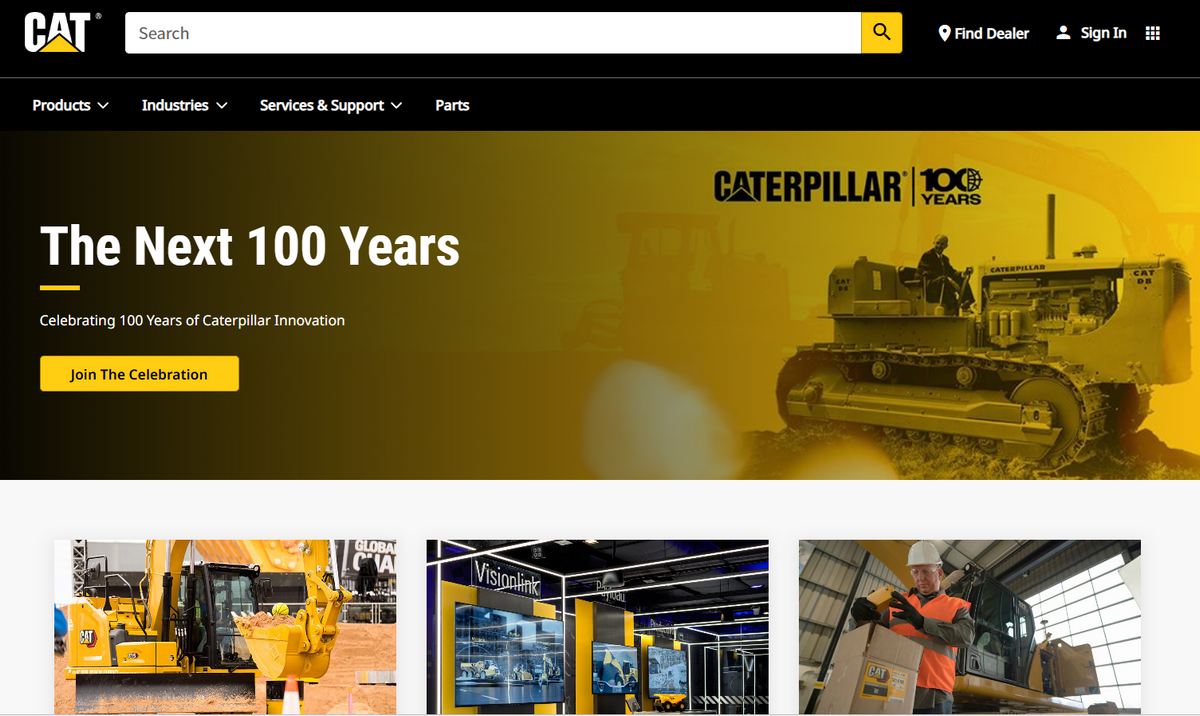
General Electric – Innovation Through Simplicity
Although General Electric has split into three standalone companies, GE Aerospace, GE Vernova, and GE HealthCare, it is still one of the oldest multinational conglomerations that excels at producing heavy machinery to accommodate numerous industries in their endeavors.
Despite its vast product range, this manufacturer's official website is minimalistic. It delivers critical information and highlights its brand and mission without overwhelming visitors.
Opting for a clean design, straightforward navigation, optimal readability, accessibility of product pages, and some nice design features, the website produces an exceptional user experience that communicates its goal of innovation through simplicity.
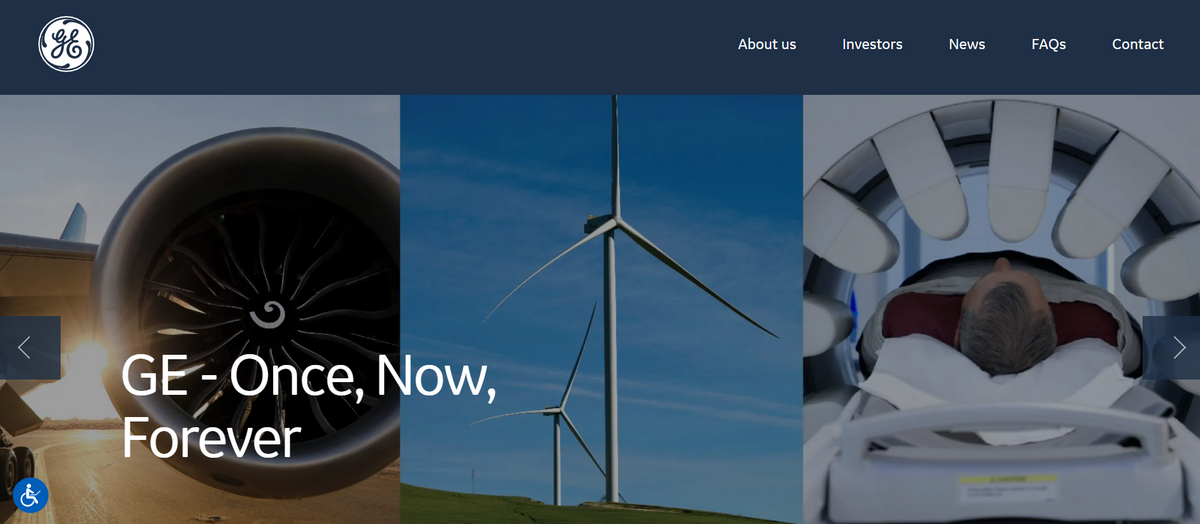
ABB – Clarity for Complex Engineering
Like GE, ABB operates in several sectors: Electrification, Industrial Automation, Motion, Robotics, and Discrete Automation. This true industry goliath has earned its top manufacturer position by providing impeccable solutions that propel companies forward. However, despite their highly advanced products built with cutting-edge techniques that might intimidate even professionals, their official website remains clean and straightforward.
Relying on time-proven presentation techniques like diagrams, charts, and infographics, they simplify complex technical content, making the manufacturing company relatable to customers' problems. The engineer-oriented navigation, videos, and well-balanced structure create much-needed clarity for non-tech-savvy customers.
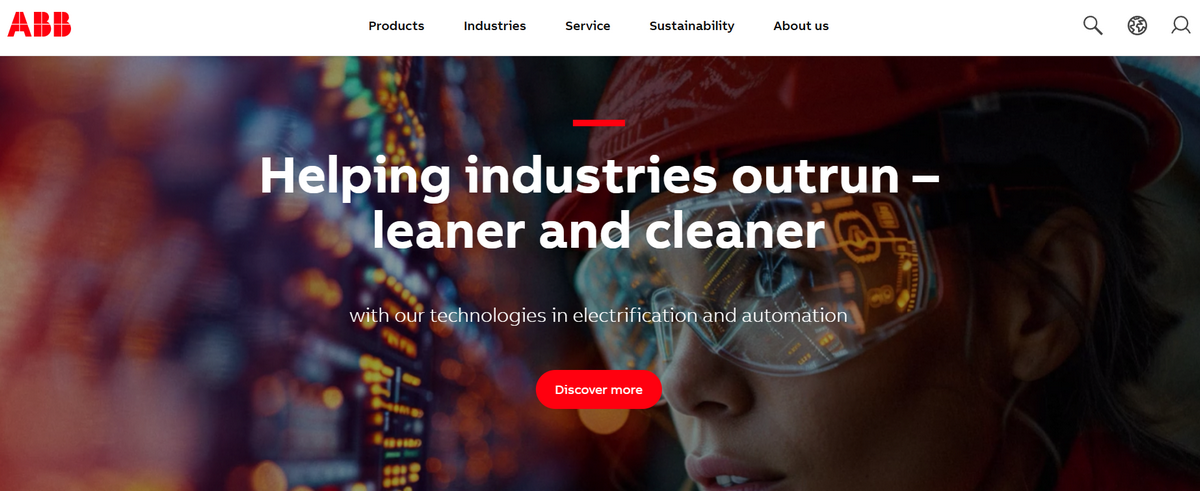
3M – Bridging Science and Interface
Accelerating solutions across industries from Design and Construction to Electronics and Government, 3M is one of the biggest manufacturers in the scientific world. Unlike the previously featured companies, their website is used as a marketing tool to attract prospects, capture leads, and win new clients, as it provides clear user paths depending on customer type or application.
Consider their information-rich yet easily digestible homepage. Here, every product range is carefully represented. Making the most out of modern solutions like sliders, tabbed areas, an industry-based filtering system, and even micro-interactions and animations has created a fantastic space for comfortable exploration and discovery of the company's benefits.
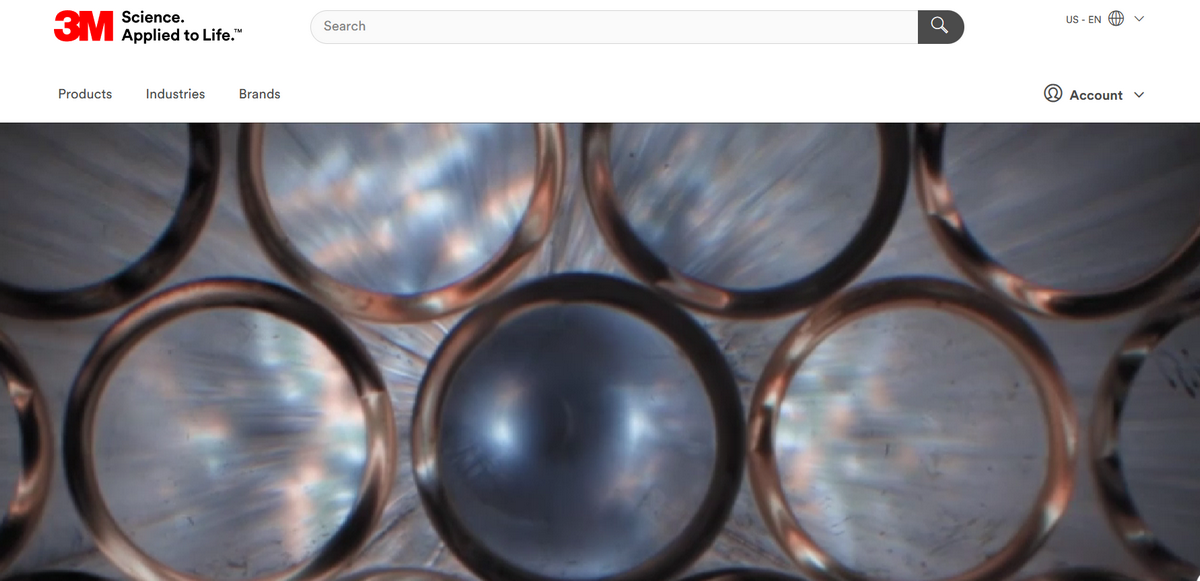
SKF – Technical Depth with a Clean Interface
SKF might not be a widely recognizable name, but it is undoubtedly one of the most popular industrial machinery, automotive, and aerospace manufacturers. As a global leader that stands behind many innovations, it knows how to deal with technical complexity and make it easy to utilize.
Therefore, it is no surprise that their website, a window to their technically advanced world, was made with the best web design practices in mind. Their engineer-focused content is laid out through simple yet effective solutions like diagrams, filters, a clean user interface, a clear navigation system, elaborate information architecture, and a pleasant layout. As a result, whether you are a tech-savvy person or not, you might easily understand the benefits of using SKF products.
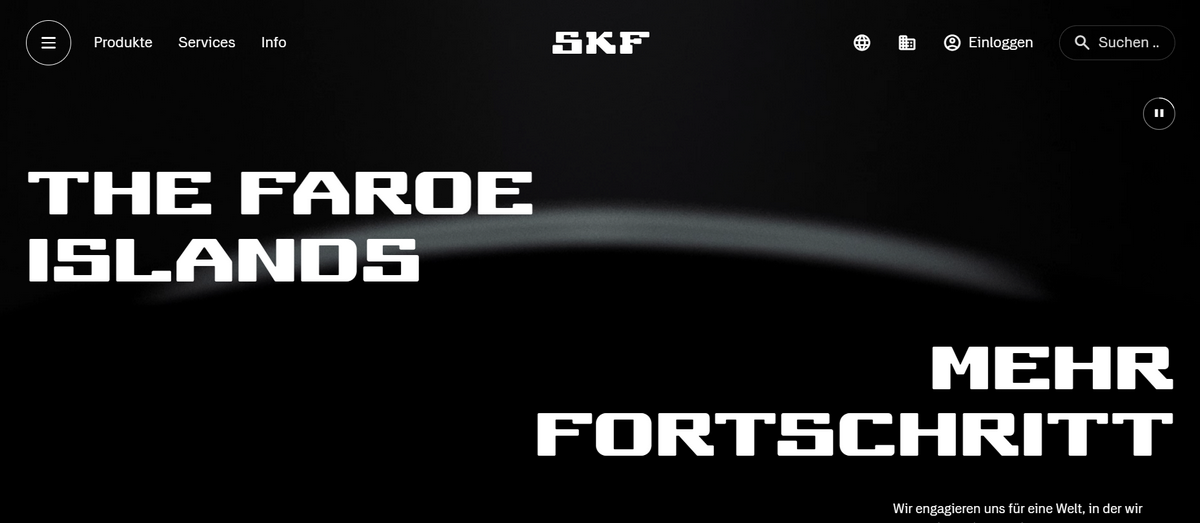
Bosch Rexroth – User-Centric Industrial Web
Among global manufacturers, Bosch operates in both the B2B and B2C sectors. It supplies technology and services for home appliances, power tools, and automotive parts. It has addressed customers' pain points for over a century, carving a strong niche.
As a company that serves businesses and standalone clients, it understands the importance of humanized communication. Therefore, its official website does everything to demonstrate its unique personality and provide a seamless user experience with high searchability and discovery qualities.
It targets professionals and regular users, making the brand relatable to the market by capitalizing on such practical approaches as logical structure, beautiful styles, videos, visual hierarchy, and impressive typography.
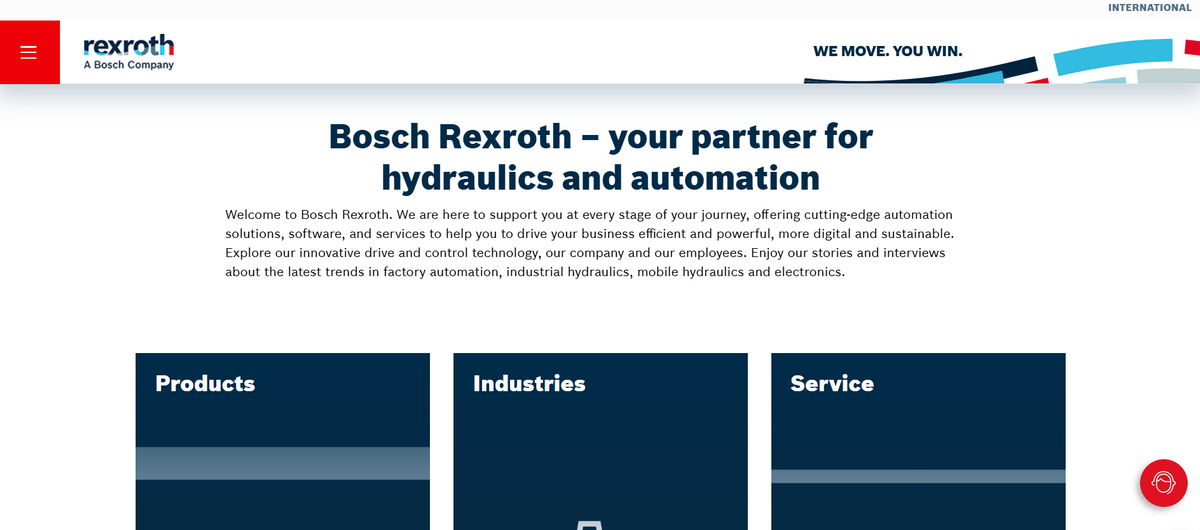
Makita – Tools and Impact in Every Pixel
This iconic Japanese manufacturer has been striving for innovation and quality for decades, emerging as a global leader with great powerhouse potential. It empowers automation and innovation across multiple industries.
Their branding team has done an excellent job presenting the company's personality, charisma, and products through modern techniques like product cards, impeccable hero areas, interesting alignment choices, and style options. Their design in the manufacturing field stands out with an engaging, visually appealing, and refreshing look that makes the first and last impression count.
Demonstrating its products and supplying visitors with critical information and strategically placed CTAs, Makita's website generates interest, addresses questions, and inspires trust and credibility.

Graco – High-Performance Layout for Equipment
Present in over 100 countries, this international conglomerate specializes in developing, dispensing, and controlling fluid-handling systems and product and powder materials. It has gone to great lengths to become the leader in the niche, perfecting every part of its business operation, including its digital presence.
The official website of Graco is nothing less than a well-devised platform powered by modern technologies, the latest trends, and best practices. It maximizes on the responsive design to deliver its brand message to a vast crowd without distortion and confusion. Excellent user experience, well-thought-out design, perfected navigation, and filtering – these tiny aspects simplify the way of exploring their technical content as well as show off their quality and reinforce their reputation as professionals.
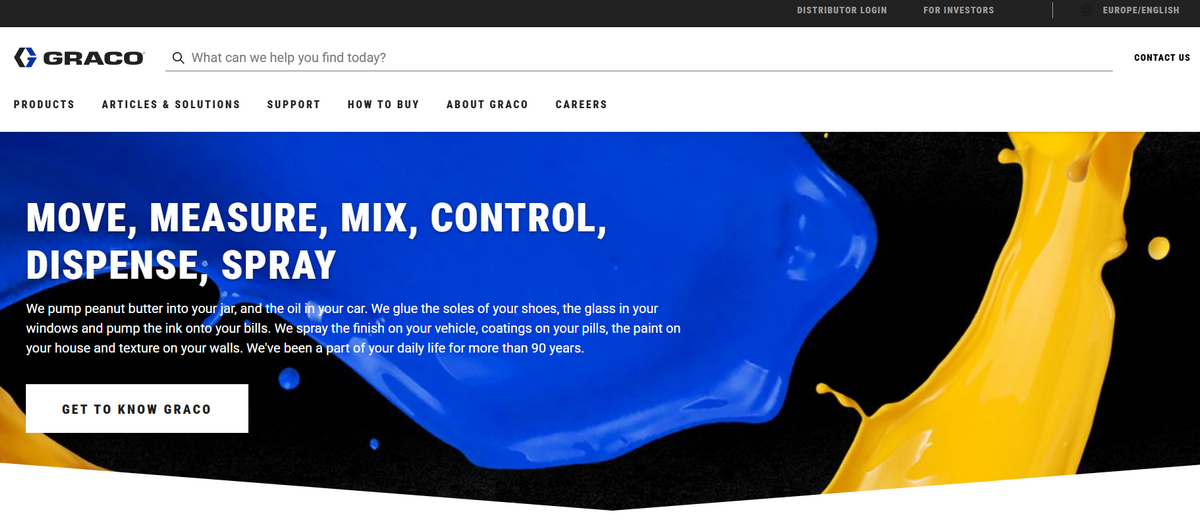
Alcoa – Lightweight Site for Heavy Industry
Since 1888, Alcoa has pursued a vision of reinventing the aluminum industry. It supports industrial sectors such as Aerospace, Automotive, and Transportation. Although the company is embedded in heavy industry and high-end technologies, its official website easily speaks to the target audience in their language.
Opting in favor of simplicity and minimalism and showing complex subjects through time-proven visual instruments, the branding team has created a comfortable space for visitors to get all the information quickly and efficiently. They have produced positive impressions and reactions, reinforcing brand identity and reputation.
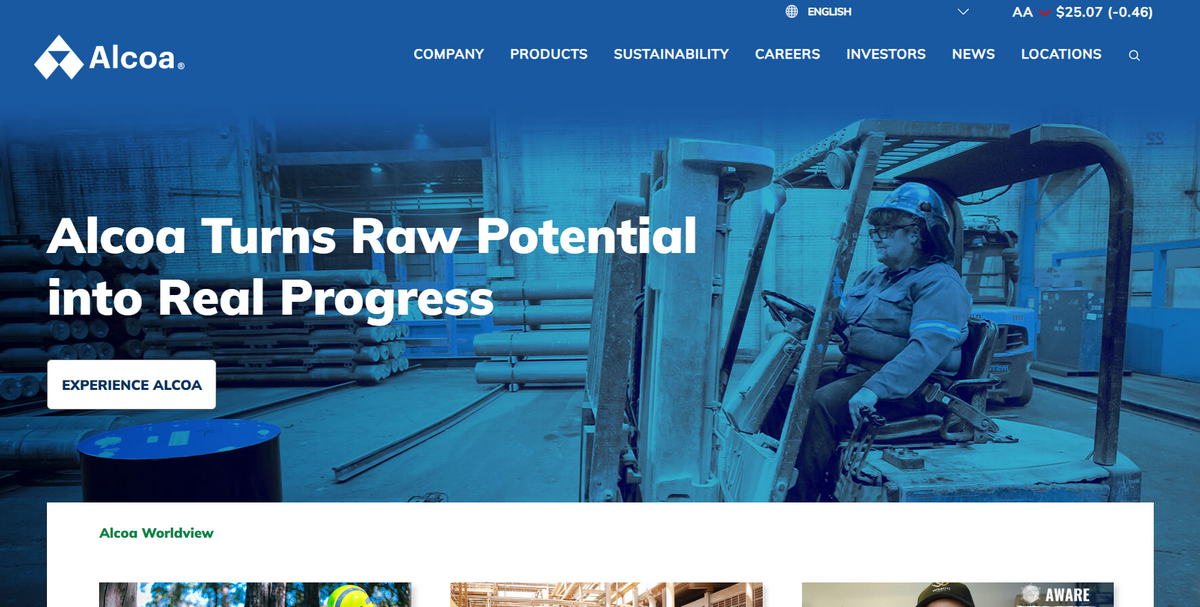
Trumpf – Precision Engineering Online
Leader in Laser technology, Trumpf is proud of its heritage and accomplishments. Operating flawlessly on the market for decades, it is rightfully considered a technology pioneer with an eye for detail.
Their website exudes an image of technological elegance and perfection and is white, spacious, clean, and precise. Every detail demonstrates the company's unique personality, originating from German admiration for accuracy, meticulousness, and excellence. It is perfectly aligned with the brand's high-tech industry and engineering products.
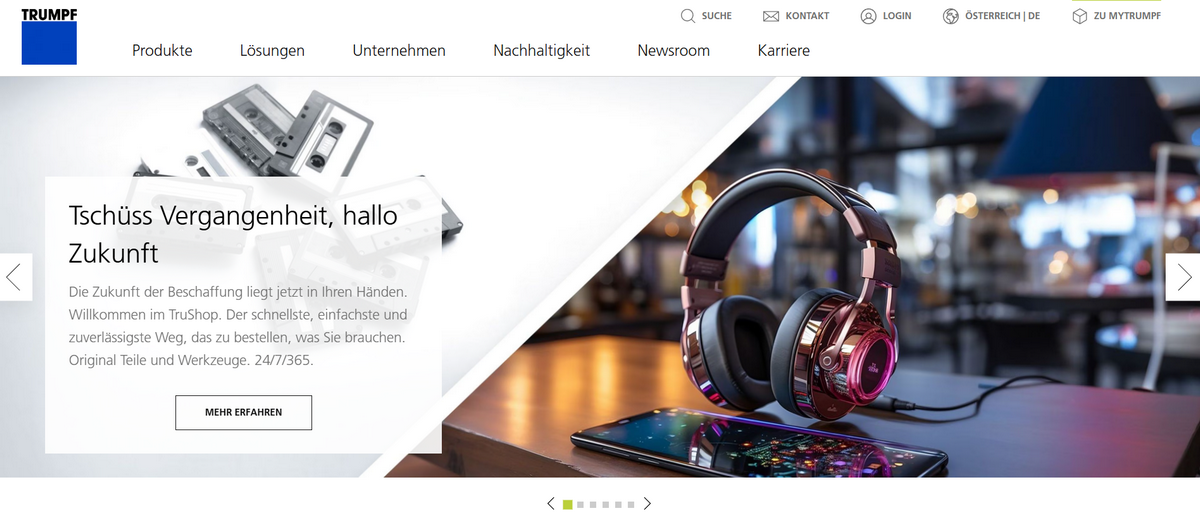
Emerson – Engineering the Experience
Emerson has set the bar high for companies across niches by delivering a wide range of automation and engineering services. It has industry expertise across multiple sectors, and its professionalism can be seen in its products and self-presentation.
Their website exploits the full potential of digital communication and design. The latter employs eye-pleasing, soft colors, bold typeface, well-balanced layout, mobile-friendly behavior, and localization features. It naturally draws visitors' attention to core elements, highlights the benefits of the products and cooperation, and reinforces brand reputation and credibility with intelligent content recommendations and personalized UX.
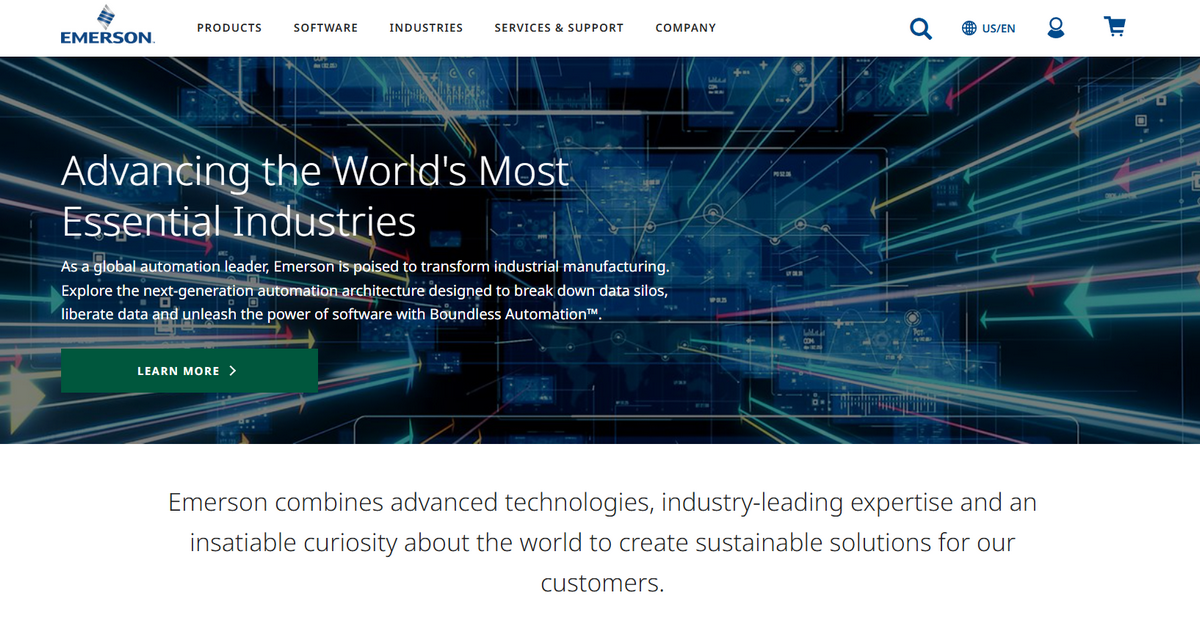
Haimer – Focused on Functionality
Haimer's core areas of expertise are tool setting and balancing, automation, digitization, and technical and engineering assistance for aerospace, medicine, technology, and engineering companies.
Their brand website is efficient and precise, prioritizing information buyers look for, along with certifications and technical documentation proving their credibility and potential. However, it is not dull. It is eye-pleasing, engaging, and even refreshing. It has a modern boxy appeal, perfectly aligned structure, image sliders, authentic visuals, lovely iconography, and pleasant micro-interactions.
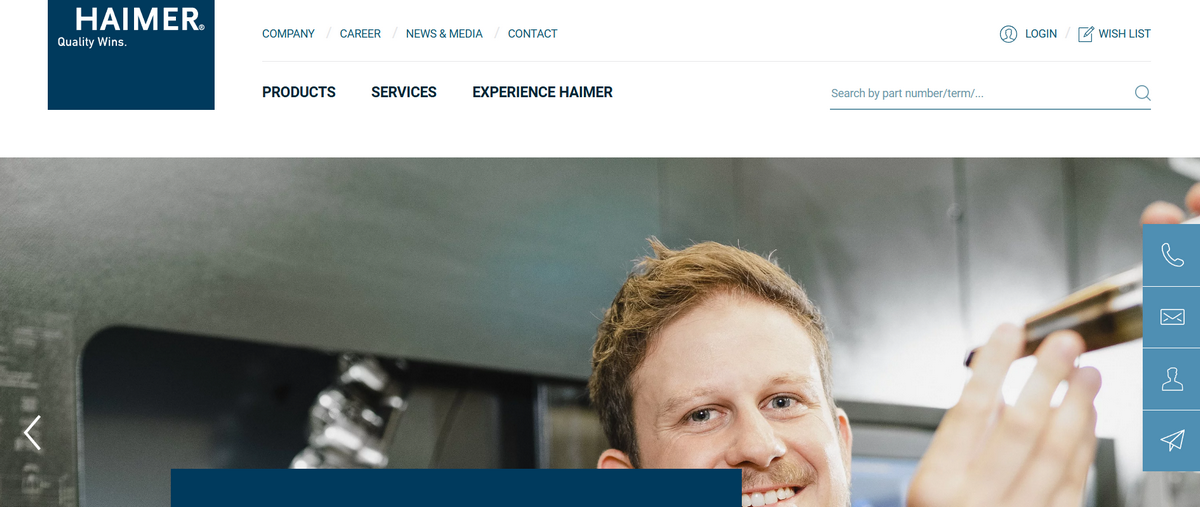
DMG MORI – Minimalism for Maximum Impact
DMG MORI is the largest machine tool builder in the world, with a prime focus on machining transformation. They promote sustainable manufacturing practices, taking businesses across niches to the next level. And their well-elaborated website exemplifies their brand messaging, vision, and mission.
Everything on their site is simple. Everyone can easily understand what they do, what benefits they get from their products, and what they can expect from the partnership. The website is minimalistic yet informative. It has minimal distractions and capitalizes on product-cen

Sandvik – Engineering Meets Digital Strategy
Sandvik excels at providing fully-fledged, highly advanced technical and engineering solutions for manufacturing, mining, and infrastructure industries. Their website demonstrates their expertise in technology and ability to keep up with the mainstream.
The storytelling experience is at the heart of their official website. It highlights their expertise and innovation in a simple, engaging, and memorable way. Animations, beautiful typography, authentic iconography, and visuals support this to produce an engaging user experience and leave a long-lasting impression of professionalism.
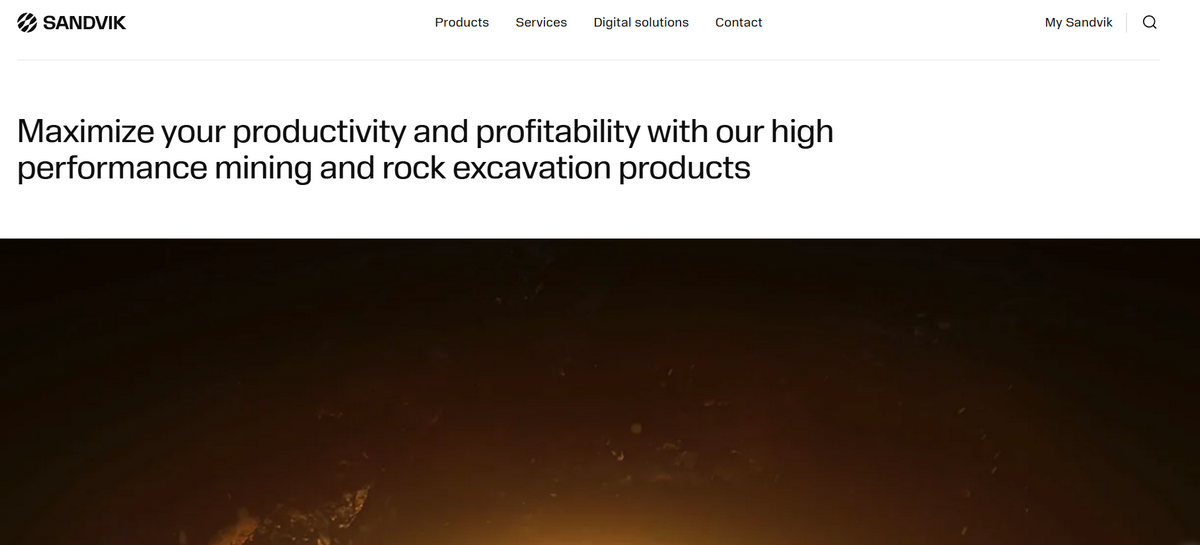
How to Build a High-Impact Manufacturing Website Design
Strong manufacturing websites that balance technical accuracy, documentation, and specification with user-focused design and a comfortable and intuitive user experience are difficult to craft because of the sector's traditional nature, advanced specifications, and extensive documentation. Here are seven basic steps to creating a successful web design in the manufacturing field.
Define your audience and goals
Defining your target audience and goals is the first step. Although most representatives in heavy industry work with businesses, some still have clients who could be engineers, entrepreneurs, or international clients. So, it is crucial to understand your ideal customers, their current preferences, pain points, expectations, and behavior patterns.
Setting the right short—and long-term targets helps the manufacturer align their website objectives with prime ones. Whether they want to increase engagement, reinforce branding, or generate leads and revenue, these goals will channel their efforts in the right direction and avoid wasted resources.
Structure your content around key services and products
Content is king, especially when introducing technically advanced products with specifications and documentation. It is critical to devise a content strategy around your key benefits, brand message, vision, mission, and goal so that prospects and clients get all the necessary data quickly and efficiently.
One of the best ways to do that is to create a clear homepage that hits all the essentials and modern standards. Use filters and contemporary approaches to represent the catalog, products, and FAQ, highlight expertise and professionalism, and prove the ability to help customers achieve their goals.
Prioritize performance and mobile responsiveness
Website optimization is the next key step that cannot be eliminated. To reach your target audience with the right message, it is imperative to make your web interface adaptable to their technical environment.
As a shift towards mobile web is evident, every website must be fully responsive, gadget-friendly, and accessible. Optimizing every page for search engines and improving key performance metrics through tactics such as compressing images, using clean and valid code structures, and introducing adaptive layouts would also help.
Use industrial visuals that build trust
Authenticity is a key to establishing trust, proving a company's credibility, and reinforcing a brand's identity and reputation. Apart from being honest and genuine in your message, your visuals must support that, as clients (in both Worlds, B2B and B2C) perceive and recall visual information better.
Therefore, demonstrate your brand's personality through original imagery, show real manufacturing photos, draw attention to product videos, and support documentation and product features with technical drawings and 3D models.
Include clear CTAs and lead generation forms
Every website is a powerful supporting tool for branding, marketing, and advertising endeavors. It is the foundation of digital communication, interactions, and a portal to your world. Even if you create it only for informative purposes, it must still have at least a contact form so prospects may reach out with their burning questions.
However, ideally, all manufacturing websites must strategically place action-oriented call-to-action buttons and lead generation forms across the homepage and inner pages to promptly address visitors' demands.
Don't forget B2B SEO and localization
B2B search engine optimization ensures your target audience can find your website easily. It provides Google and its engines with the correct ranking tools that generate organic and engaged traffic to your platform.
Along with implementing a keyword strategy, localizing your content to speak with your international audience in the same language and meet global standards, laws, and regulations to operate legally across the Globe is essential.
Choose the right CMS and integrations
The final step is to choose the right content management system, which will provide a solid foundation for your self-presentation and marketing efforts. It must meet the web standards and allow easy and effective scaling through seamless integration with other systems like Salesforce or Hubspot.
Some of the most popular and time-proven solutions are WordPress (Elementor), Webflow, and Headless CMS.
Conclusion
Whether you operate in the heavy machinery industry or provide services to automate processes for aerospace missions, the manufacturing B2B world is harsh. However, with a well-thought-out, branded, and informative website, raising awareness of your company, building a strong brand identity, and finding clients is much easier.
The high-impact design for manufacturing companies might look a bit different from others. It should provide space and flexibility to demonstrate the company's technically advanced products without intimidating them with specifications and documentation. It must meet web standards and hit all the essentials to ensure an intuitive user experience, answer burning questions, and ultimately inspire trust and help the company grow and scale.
Does that still sound tricky? Contact our team of professionals to get answers to all your questions and start building or redesigning your website today.
Jun 19, 2025
